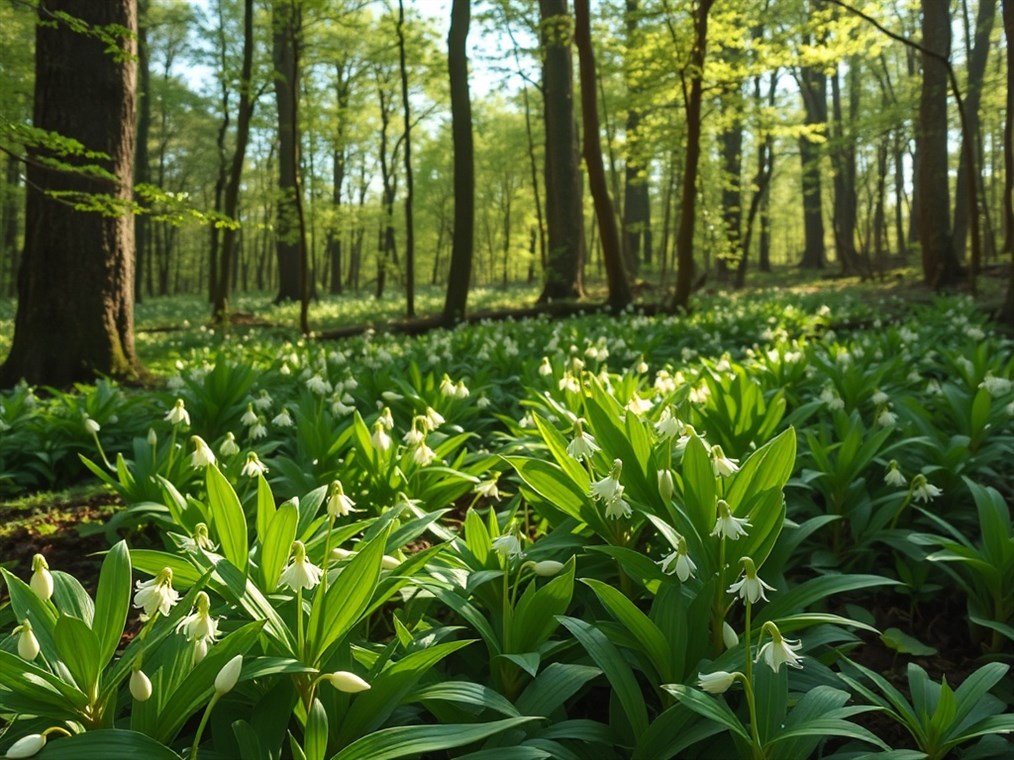Wild Garlic: Friend or Foe? A Forager’s Tale
Ah, wild garlic. The very name conjures up images of lush woodlands, bursting with the promise of spring. For foragers like myself, it’s a real treasure – a chance to bring the vibrant, garlicky flavors of nature into our kitchens. But before you grab your basket and head for the woods, let’s talk about something important: is wild garlic toxic?
Well, here’s the thing: wild garlic itself isn’t toxic at all. In fact, it’s packed with good stuff and can add a delicious zing to all sorts of dishes. The real danger lies in what it looks like. You see, wild garlic has some seriously shady lookalikes lurking in the undergrowth.
Think of it like this: you’re at a party, and someone’s dressed up as your friend. From a distance, they look identical! But get closer, and you’ll spot the differences. With wild garlic, mistaking it for one of its poisonous twins can have nasty consequences.
So, who are these imposters? The most common culprits are Lily of the Valley, Autumn Crocus, and Arum maculatum (also known as Cuckoo Pint or Lords and Ladies). Lily of the Valley can cause some unpleasant stomach issues and mess with your heart rate. Autumn Crocus is even worse – seriously toxic, potentially causing liver problems and even being fatal. And Arum maculatum? All parts of it are nasty, causing swelling and burning if you’re unlucky enough to eat it.
The tricky part is that these plants often grow in the same kind of places as wild garlic – damp, shady woodlands. That’s why knowing how to identify wild garlic with absolute certainty is crucial.
So, how do you tell the real deal from the dangerous doppelgangers? Here’s what I look for:
First and foremost, the smell. Wild garlic has this incredible, powerful garlic scent when you crush its leaves. It’s unmistakable! Honestly, if it doesn’t smell strongly of garlic, leave it alone. But a word of warning: that garlic smell can stick to your hands, so be careful you’re not just smelling the garlic from the last leaf you checked!
Next, take a look at the leaves. They’re a vibrant, bright green, broad, and spear-shaped, with a pointy end. Each leaf grows individually from the plant’s base, on its own stem. And the underside of the leaves? They should be matte, not shiny.
If the plant is flowering (usually between April and June in the UK), wild garlic has beautiful white, star-shaped flowers. They grow in rounded clusters – we call them umbels – on a single flower head.
Finally, consider where you find it. Wild garlic loves to grow in big patches in damp, shady spots, like woodlands, valleys, and near streams.
To make it crystal clear, here’s a quick cheat sheet:
| Feature | Wild Garlic (Allium ursinum)
| Feature | Autumn Crocus (Colchicum autumnale)

